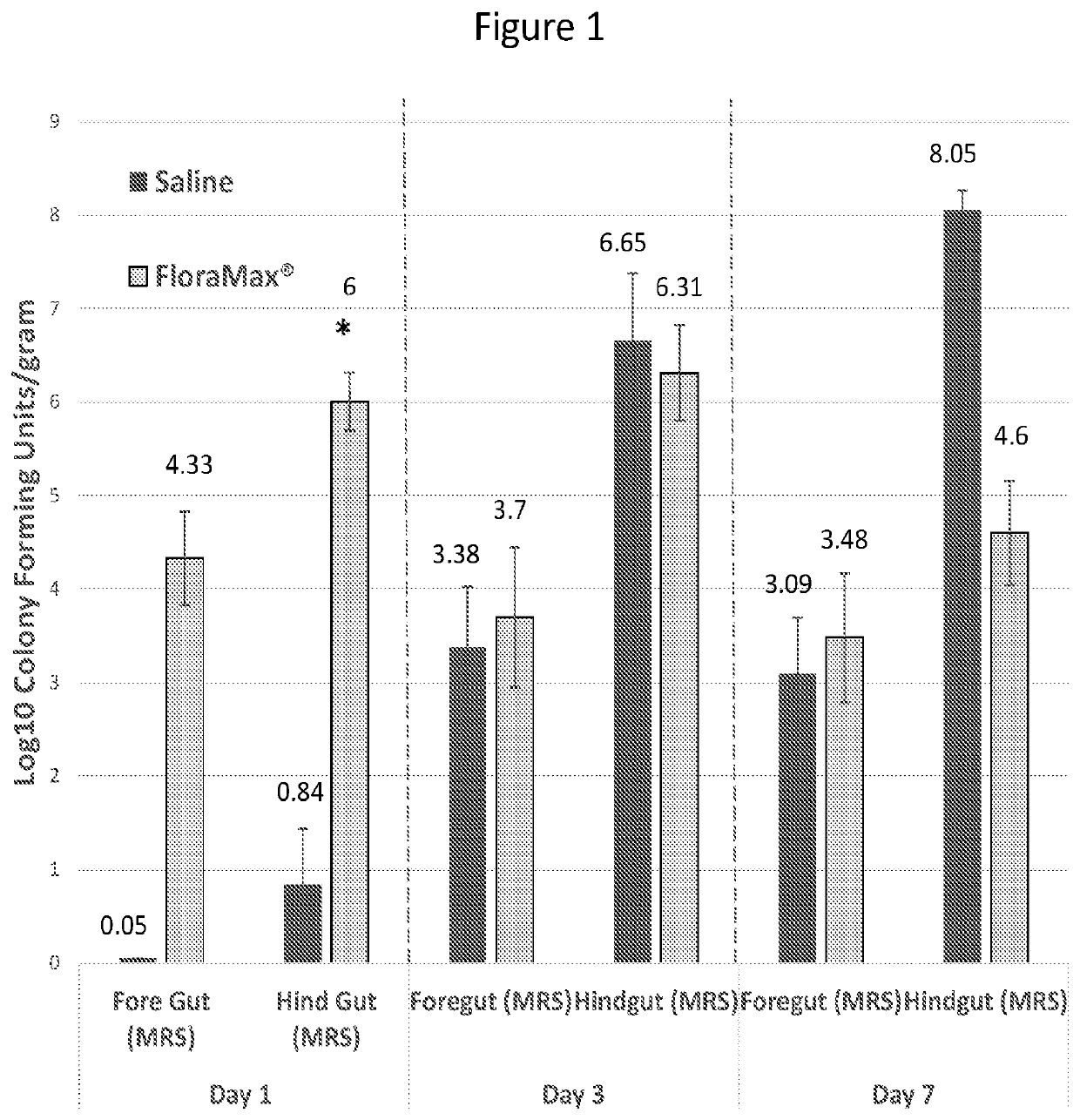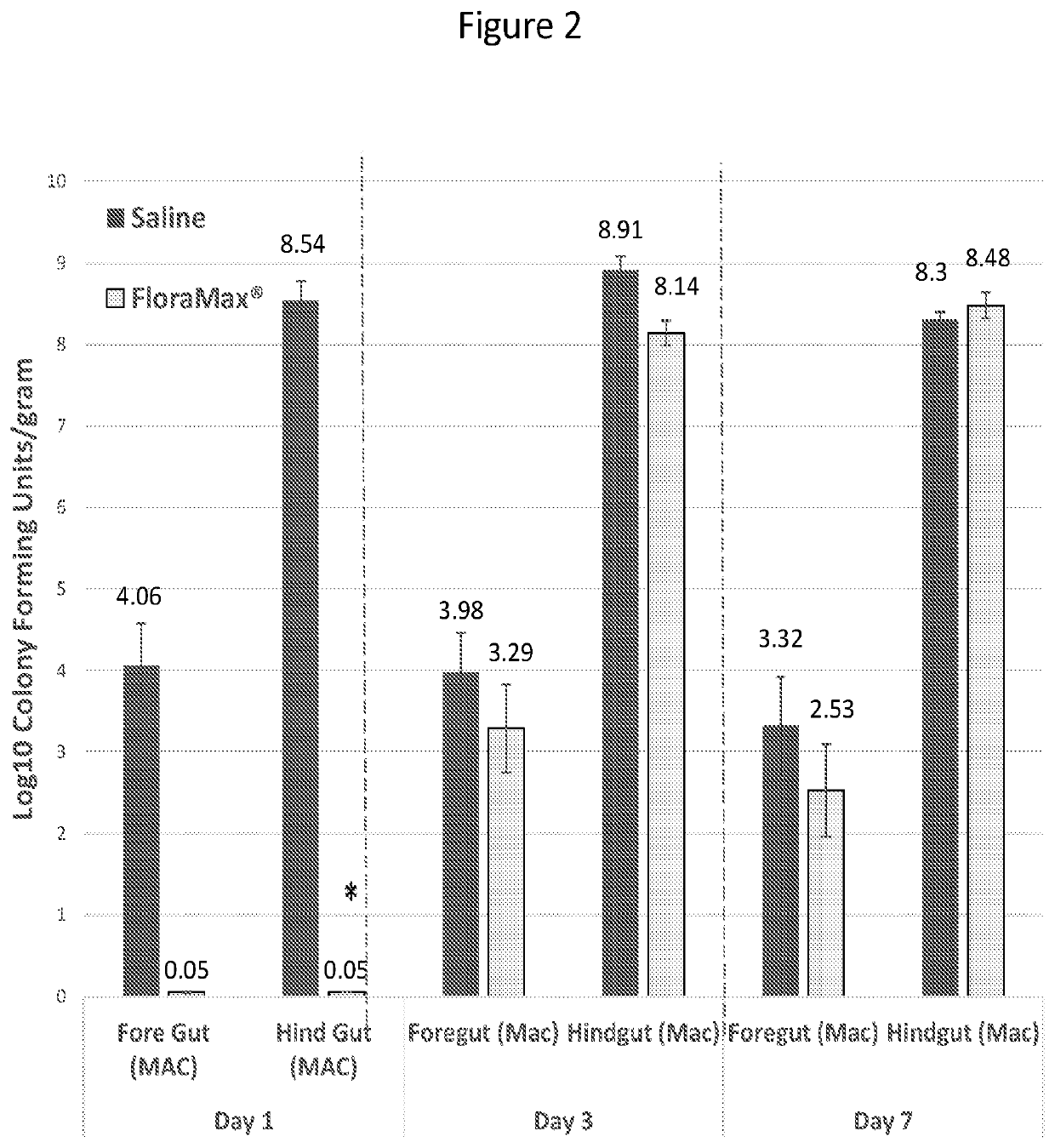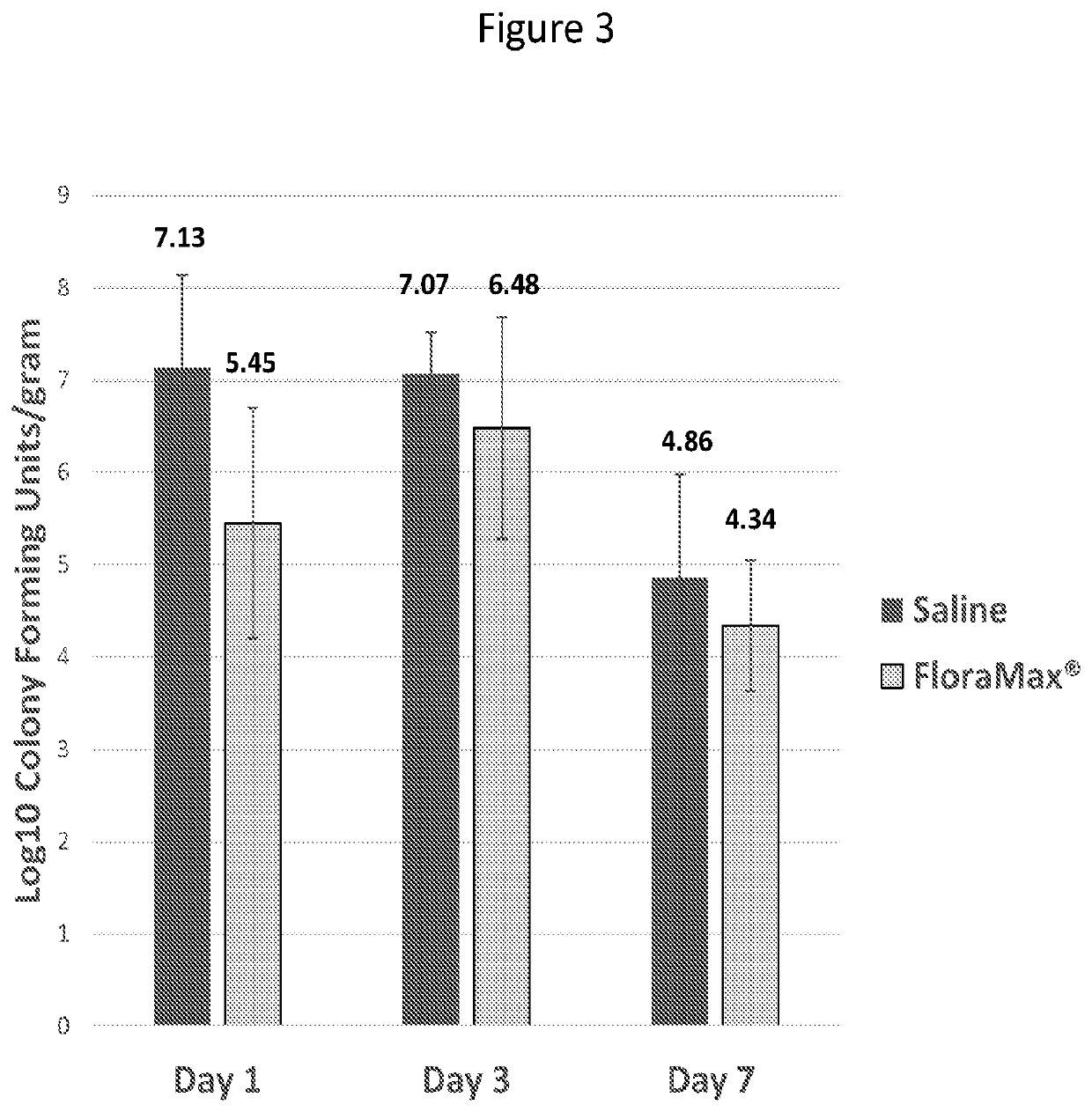Poultry probiotic vaccine compositions and methods of use thereof
a technology of probiotics and compositions, applied in the field of poultry probiotic vaccine compositions, can solve the problems of insufficient protection of poultry, insufficient administration of antibiotics, and inability to effectively protect poultry from airborne pathogens
- Summary
- Abstract
- Description
- Claims
- Application Information
AI Technical Summary
Benefits of technology
Problems solved by technology
Method used
Image
Examples
example 1
f In Ovo Administration of Lactic Acid Bacteria
[0039]This Example describes in ovo administration of lactic acid bacteria, and in particular gut adapted lactic acid bacteria, on early hatchling performance and ability to resist colonization with pathogenic bacteria or bacteria that will not be beneficial to the feed efficiency of the young chick. We found that in ovo administration of probiotic lactic acid bacteria did not negatively impact hatchability, increased the colonization of the gastrointestinal tract with lactic acid bacteria, decreased the recovery of gram negative bacteria from the gastrointestinal tract, decrease the recovery of Salmonella from the gastrointestinal tract and resulted in significantly increased body weights by 3 to 7 days after hatch. These results demonstrate the benefits of in ovo probiotic administration to early chick gastrointestinal health.
[0040]In Experiment 1, 150 eggs were injected with 200 μL / egg sterile saline and 150 eggs were injected with 2...
example 2
f in Ovo Administration of Floramax®-B11 and Md Vaccine
[0043]This Example describes an in ovo evaluation of FloraMax®-B11 on Marek's disease HVT vaccine protective efficacy, hatchability, microbiota composition, morphometric analysis, and Salmonella enteritidis infection in broiler chickens
[0044]Four experiments were conducted to evaluate the effect of in ovo administration of FloraMax®-B11 (FM) on Marek's disease (MD) herpesvirus of turkeys (HVT) vaccine protective efficacy, hatchability, microbiota composition, morphometric analysis and Salmonella enteritidis (SE) infection in chickens. In Exp. 1, day 18 White Leghorn embryos were randomly distributed in four groups: 1) HVT vaccinated in ovo and no Marek's disease virus (MDV) challenge; 2), HVT+FM vaccinated in ovo and no MDV challenge; 3) HVT vaccinated in ovo and challenge with virulent MDV (vMDV; strain 583A); 4), HVT+FM vaccinated in ovo and challenge with vMDV. Exp. 2 was designed exactly the same as Exp. 1 but chicks were ch...
experiment 1
[0054]Chicks were randomly distributed into four groups (each with 17 birds) in two independent trials: 1) HVT vaccinated in ovo and no MDV challenge; 2) HVT+FloraMax®-B11 vaccinated in ovo and no MDV challenge; 3) HVT vaccinated in ovo and challenged with MDV; 4) HVT+FloraMax®-B11 vaccinated in ovo and challenged with MDV. MD vaccine was administered in ovo at the manufacturer recommended dosage either alone or with FloraMax®-B11 (104 cfu). Birds were monitored until 8 wk of age, then humanely euthanized and evaluated for MD incidence. Chickens were considered MD positive if peripheral nerve enlargements, tumors, or both were present at necropsy. When enlarged nerves or gross tumors were in question, tissue samples were collected and processed for microscopic evaluation. Chicks that died during the first wk of placement were considered nonspecific chick mortalities and were excluded from the experiment.
PUM
| Property | Measurement | Unit |
|---|---|---|
| time | aaaaa | aaaaa |
| time | aaaaa | aaaaa |
| time | aaaaa | aaaaa |
Abstract
Description
Claims
Application Information
 Login to View More
Login to View More - R&D
- Intellectual Property
- Life Sciences
- Materials
- Tech Scout
- Unparalleled Data Quality
- Higher Quality Content
- 60% Fewer Hallucinations
Browse by: Latest US Patents, China's latest patents, Technical Efficacy Thesaurus, Application Domain, Technology Topic, Popular Technical Reports.
© 2025 PatSnap. All rights reserved.Legal|Privacy policy|Modern Slavery Act Transparency Statement|Sitemap|About US| Contact US: help@patsnap.com



